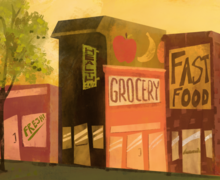Pedro Roth uses paper napkins, glass to tell the story of a mystical orb
Courtesy of Punto de Contacto
Pedro Roth's ALEPH exhibit tells a story by Jorge Luis Borges in which two people meet and one brings the other to a basement that has a sphere showing all the shapes of life.
ALEPH is a concept, a magical orb, a narrative, the first letter of the Hebrew alphabet and an 800-piece exhibit that will be showcased at Punto de Contacto/Point of Contact, Inc.
The exhibit’s artist, Pedro Roth, will discuss ALEPH and provide a tour of the gallery on Thursday from 6-8 p.m. Roth is a “conventional, conservative artist” who works with standard materials like drawings and paintings, said Rainer Wehner, preparator of the gallery.
The show is a tribute to its namesake, ALEPH. Hebrew letters are not just sounds because they have meanings, said Tere Paniagua, executive director of the gallery. Aleph is the first letter of the alphabet and means “the beginning.”
Wehner said the exhibit tells a story by Jorge Luis Borges in which two people meet and one brings the other to a basement that has a sphere showing all the shapes of life. This orb is the center of Roth’s show. Wehner said Roth is portraying the feeling of looking into the orb and seeing the world in simultaneous views.
“The aleph shows every place in the world at once,” Paniagua said. “There’s no change between places, it’s all at once.”
To help display the concept of the orb representing infinity, the gallery puts a small glass dome on a pedestal in the middle of the showroom.
“Everything in the glass changes shape as you move into it,” said Sara Felice, assistant director of the gallery. “So, it’s kind of interactive and it looks different to you than it does to me because of the height difference and it follows this theme of the view of the whole world.”
Paniagua said one thing that separates Roth from other artists is his canvas. Roth’s collection displays an array of napkins on one wall that the artist utilizes as his canvas. Each napkin carries a different aspect of the concept Roth portrays with the show. He works in gel pens, markers and paints on sketch pad paper and napkins.
Roth previously showed the exhibit in a museum in Puerto Rico. Paniagua said the works came mailed together in “not the best condition.”
“The papers were torn in many cases, but he said it was fine, that this was a part of it all,” she said.
Viewing the exhibit in person shows the wear and tear the fine materials experienced in their transport to the gallery, Paniagua said. Roth works off an organic process that allows him to be part of the “weathering” of a piece.
Pieces are arranged to create a display without frames in the exhibit, and pieces of sketch pad paper that have loose ends from being torn off a pad are tacked to the wall across from doodles on napkins.
“When you’re in a museum, there’s a lot of works that are not that way,” Felice said. “This rule of you don’t touch things, not that you should touch the art, but he is very in tune with the natural process of the art.”
Published on September 25, 2017 at 12:03 am
Contact Emma: elglasse@syr.edu





